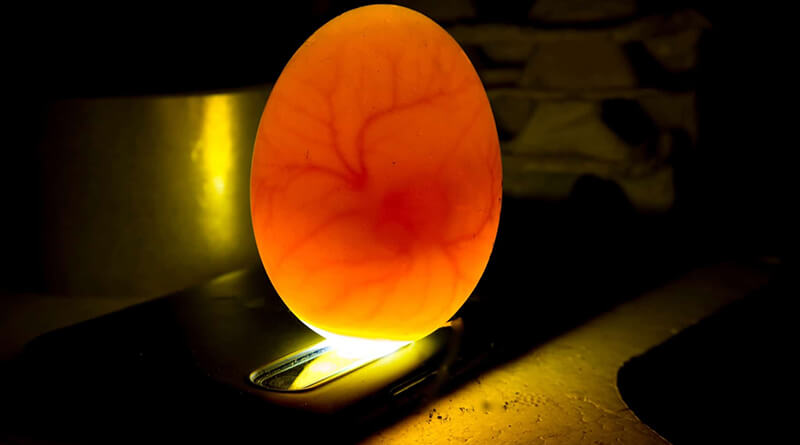Inside the Egg, Hatching Chicks (Grades K-2)
Students investigate embryo development in chicken eggs.

Background
Lesson Activities
Recommended Companion Resources
Credits
Author
Lyndi Perry | Utah Agriculture in the Classroom
Sources
- http://www.incredibleegg.org/egg-nutrition/
- http://educationstation.discoveryeducation.com/field-trips/pearl-valley-farms
Standards
Texas Content Area Standards
-
ELA: K.110.2.b.1
Developing and sustaining foundational language skills: listening, speaking, discussion, and thinking - - oral language. The student develops oral language through listening, speaking, and discussion.
- ELA: K.1.C: The student is expected to share information and ideas by speaking audibly and clearly using the conventions of language.
-
ELA: 1.110.3.b.1
Developing and sustaining foundational language skills: listening, speaking, discussion, and thinking - - oral language. The student develops oral language through listening, speaking, and discussion.
- ELA: 1.1.C: The student is expected to share information and ideas about the topic under discussion, speaking clearly at an appropriate pace and using the conventions of language.
-
ELA: 2.110.4.b.1
Developing and sustaining foundational language skills: listening, speaking, discussion, and thinking -- oral language. The student develops oral language through listening, speaking, and discussion.
- ELA: 2.1.C: The student is expected to share information and ideas that focus on the topic under discussion, speaking clearly at an appropriate pace and using the conventions of language.
-
Social Studies: 2.113.13.c.16
Social studies skills. The student communicates in written, oral, and visual forms. The student is expected to:
- Social Studies: 2.113.13.c.16.E: communicate information visually, orally, or in writing based on knowledge and experiences in social studies
- Social Studies: 2.113.13.c.16.F: create written and visual material such as stories, maps, and graphic organizers to express ideas
-
Social Studies: K.113.11.c.13
Social studies skills. The student applies critical-thinking skills to organize and use information acquired from a variety of valid sources, including technology. The student is expected to:
- Social Studies: K.113.11.c.13.D: sequence and categorize information
-
Social Studies: K.113.11.c.14
Social studies skills. The student communicates in oral and visual forms. The student is expected to:
- Social Studies: K.113.11.c.14.C: communicate information visually, orally, or in writing based on knowledge and experiences in social studies
- Social Studies: K.113.11.c.14.D: create and interpret visuals, including pictures and maps
-
Social Studies: 1.113.12.c.16
Social studies skills. The student applies critical-thinking skills to organize and use information acquired from a variety of valid sources, including technology. The student is expected to:
- Social Studies: 1.113.12.c.16.D: sequence and categorize information
-
Social Studies: 1.113.12.c.17
Social studies skills. The student communicates in oral, visual, and written forms. The student is expected to:
- Social Studies: 1.113.12.c.17.C: communicate information visually, orally, or in writing based on knowledge and experiences in social studies
- Social Studies: 1.113.12.c.17.D: create and interpret visual and written material
-
Social Studies: 2.113.13.c.15
Social studies skills. The student applies critical-thinking skills to organize and use information acquired from a variety of valid sources, including technology. The student is expected to:
- Social Studies: 2.113.13.c.15.D: interpret oral, visual, and print material by sequencing, categorizing, identifying the main idea, predicting, comparing, and contrasting
-
Science: K.112.2.b.13
Organisms and environments. The student knows that organisms resemble their parents and have structures and undergo processes that help them interact and survive within their environments. The student is expected to:
- Science: K.112.2.b.13.B: identify the different structures that animals have that allow them to interact with their environment such as seeing, hearing, moving, and grasping objects.
-
Science: 1.112.3.b.12
Organisms and environments. The student knows that the environment is composed of relationships between living organisms and nonliving components. The student is expected to:
- Science: 1.112.3.b.12.A: classify living and nonliving things based upon whether they have basic needs and produce young.
- Science: 1.112.3.b.12.B: describe and record examples of interactions and dependence between living and nonliving components in terrariums or aquariums.
-
Science: 1.112.3.b.13
Organisms and environments. The student knows that organisms resemble their parents and have structures and undergo processes that help them interact and survive within their environments. The student is expected to:
- Science: 1.112.3.b.13.B: record observations of and describe basic life cycles of animals, including a bird, a mammal, and a fish.
-
Science: 2.112.4.b.12
Organisms and environments. The student knows that living organisms have basic needs that must be met through interactions within their environment. The student is expected to:
- Science: 2.112.4.b.12.A: describe how the physical characteristics of environments, including the amount of rainfall, support plants and animals within an ecosystem
-
Science: 2.112.4.b.13
Organisms and environments. The student knows that organisms have structures and undergo processes that help them interact and survive within their environments. The student is expected to:
- Science: 2.112.4.b.13.B: record and compare how the structures and behaviors of animals help them find and take in food, water, and air
